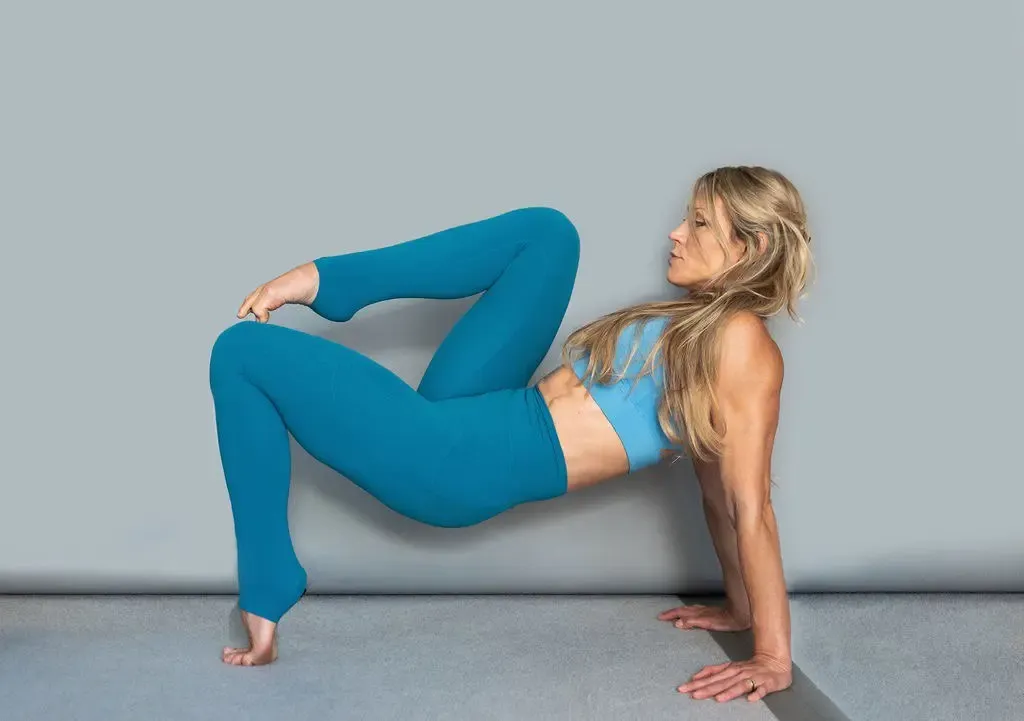
As women age, it becomes more difficult to build muscle mass, but that’s no reason to give up on having a beautiful figure — you just need to work a bit harder. Mentally prepare yourself for this and work systematically toward your goal. Today, as a fitness expert, I’ll share how to strengthen your muscle corset.
Where to Start?
Due to anatomical structure, women’s core muscles are weaker than men’s. Additionally, today’s fast-paced lifestyle doesn’t help. We all need regular movement and wellness procedures. A sedentary lifestyle without physical activity — or an overly exhausting one — will eventually make itself known. The spine takes on the brunt of the strain, so it’s very important to strengthen the muscle corset. Maximum results can be achieved with online fitness sessions with a trainer.
Who Should Approach Workouts with Caution?
Although therapeutic physical activity is considered restorative, it has several contraindications:
- Pronounced pain syndrome in osteochondrosis, flare-up of any chronic disease;
- Elevated body temperature of any origin;
- Infectious or respiratory disease;
- Congestive heart failure;
- High-grade hypertension;
- Respiratory failure;
- Complicated diabetes;
- Recent heart attack.
Types of Therapeutic Physical Activity for Strengthening the Muscle Corset
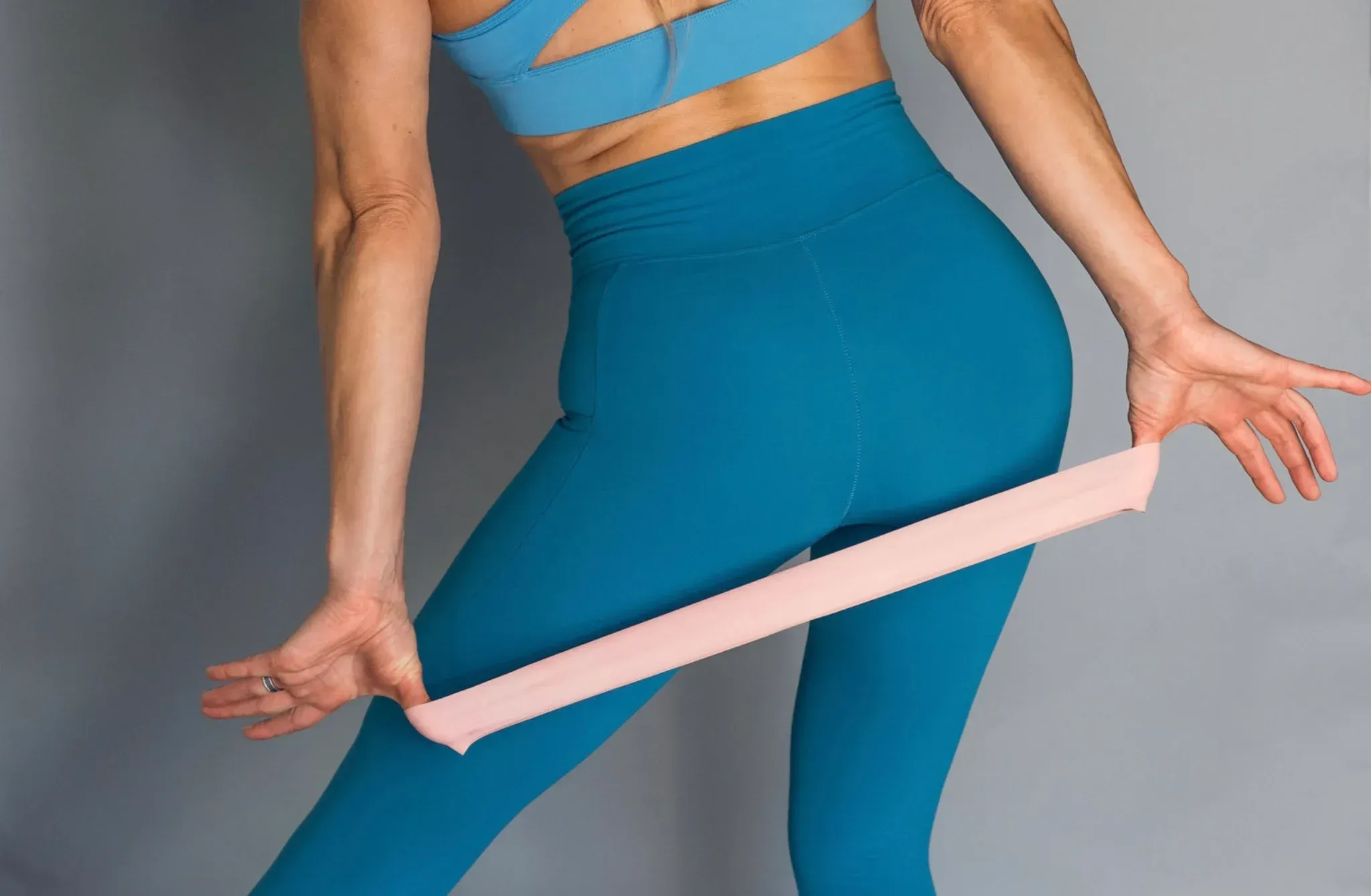
Before beginning exercises to strengthen the muscles of the back, abs, and pelvic floor, it’s important to determine the type of workout. Today, there are three main types of therapeutic gymnastics for the core muscles:
- First group: Exercises with dance elements. These include aerobics, rhythmic gymnastics, and similar activities. These workouts help with weight loss, strengthening the cardiovascular system, and toning the necessary muscle groups.
- Second group: Strength exercises that develop the muscle corset. This includes shaping, athletic gymnastics, and fitness.
- Third group: Exercises based on Eastern practices and methodologies. They train the respiratory system and improve flexibility and muscle strength. Yoga falls into this category.
Given the wide variety, it can be difficult to determine on your own which core exercises are best — consulting a qualified trainer is recommended.
Working Toward Results
Now you have an idea of the ways to strengthen the spine, but it's important to do the exercises regularly. If they are selected correctly, you can achieve the following:
- Bring the muscle corset to a state where it supports the vertebrae and reduces strain on them.
- Strengthen the muscles, tendons, and ligaments of the back, abs, and pelvic floor.
- Improve muscle elasticity, reducing injury risk.
- Straighten posture and decrease spinal curvature.
- Improve overall well-being and mood.
- Reduce pain levels.
- Increase stamina.
Key Rules for Strengthening the Muscle Corset
When performing exercises to strengthen back muscles, follow these rules:
- You should not feel pain during workouts. If you do, reduce the load, check your technique, or switch exercises.
- If you're doing gymnastics due to spinal conditions, only exercise during remission, not during flare-ups.
- All movements must be slow and controlled. Sudden or jerky motions can cause injury.
- Always start your workout with a warm-up and stretching — if you're reading my blog, you probably already know this.
- Do not take painkillers before your workout. They can dull sensations that might signal harm, leading to negative consequences.
- The golden rule of all training: do no harm!
To strengthen the muscle corset, it’s necessary to take a comprehensive approach and work on each section, paying the most attention to the core area.
The older we get, the more important mobility and flexibility exercises become.
Exercise 1
Sit on a chair. Inhale as you arch your back, exhale as you engage your abs and round your spine.
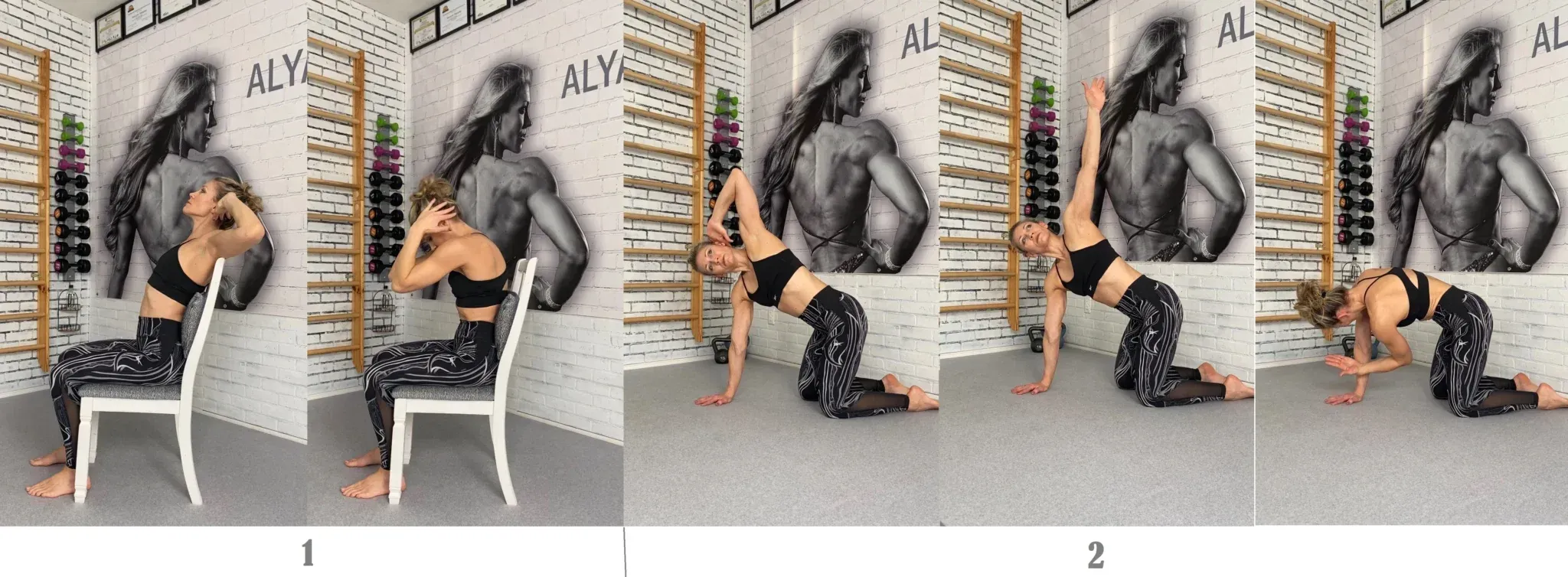
Exercise 2
Get on your knees. On the inhale, open your chest using the arm bent at the elbow. The elbow leads the movement, then straighten the arm to lengthen the lever. On the exhale — return the elbow. Do not shrug your shoulders. Do not arch your lower back.
Exercises for the muscle corset using 360° breathing are also effective.
Exercise 1
Sit on a chair. Keep your spine in a neutral position. As you inhale, breathe into your back and side ribs — your shoulders should not rise, and your pelvis should not tilt forward. On the exhale, gently stretch the resistance band and move your arms outward, engaging your abdominal muscles in a wave-like motion from the bottom up.
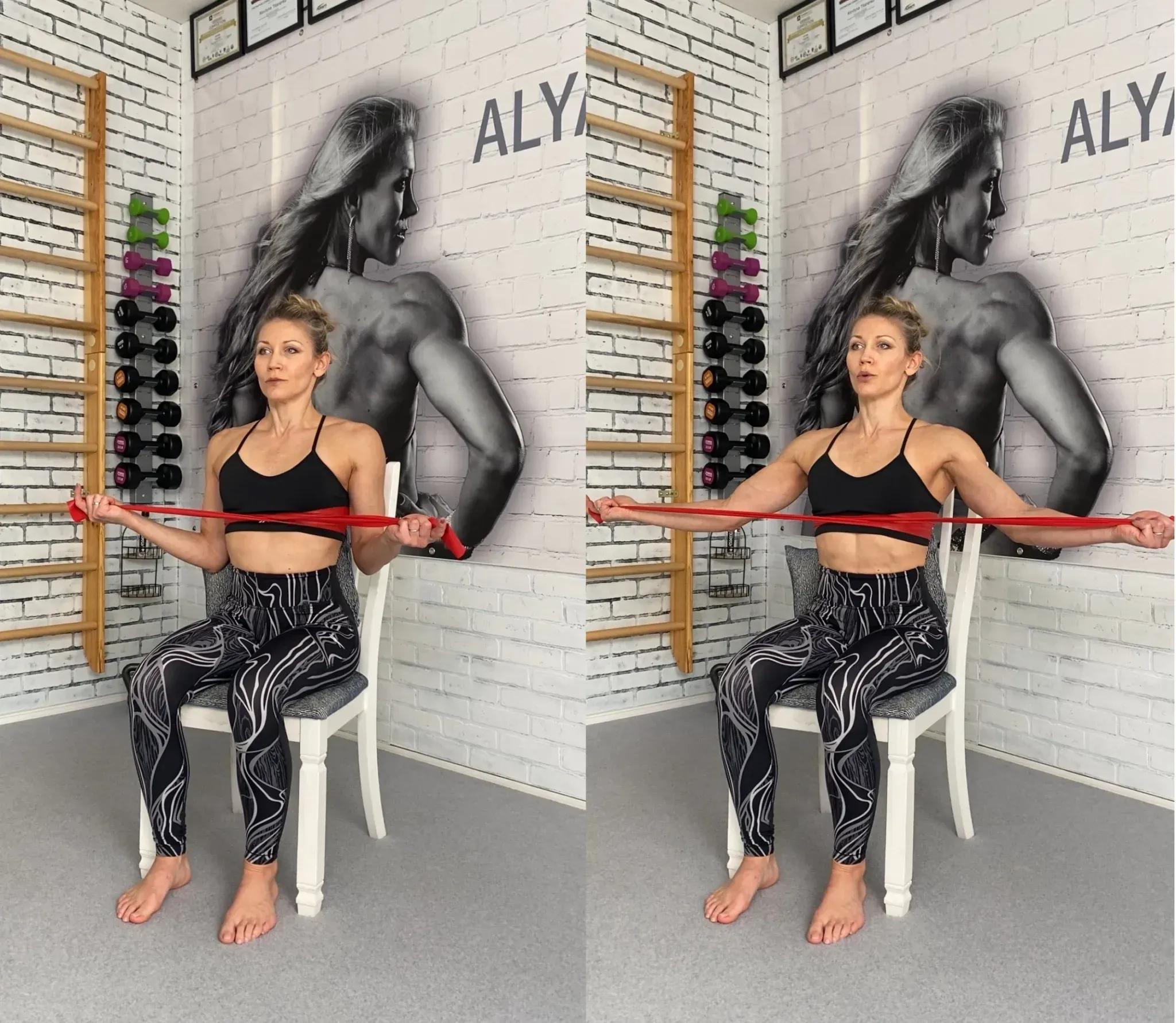
Exercises 2 and 3
2. Get on all fours. Keep your spine in a neutral position. The pelvis should remain level. Inhale into your back and side ribs; on the exhale, extend the opposite arm and leg, engaging the abdominal muscles.
3. While lying on your side, support yourself on your elbow, with your knees bent. Keep your spine neutral. Inhale into the ribs and back as you lift the top knee slightly and raise your arm. On the exhale, draw in the front abdominal wall as you close the knee and lower the arm. Your back should not round during the movement.
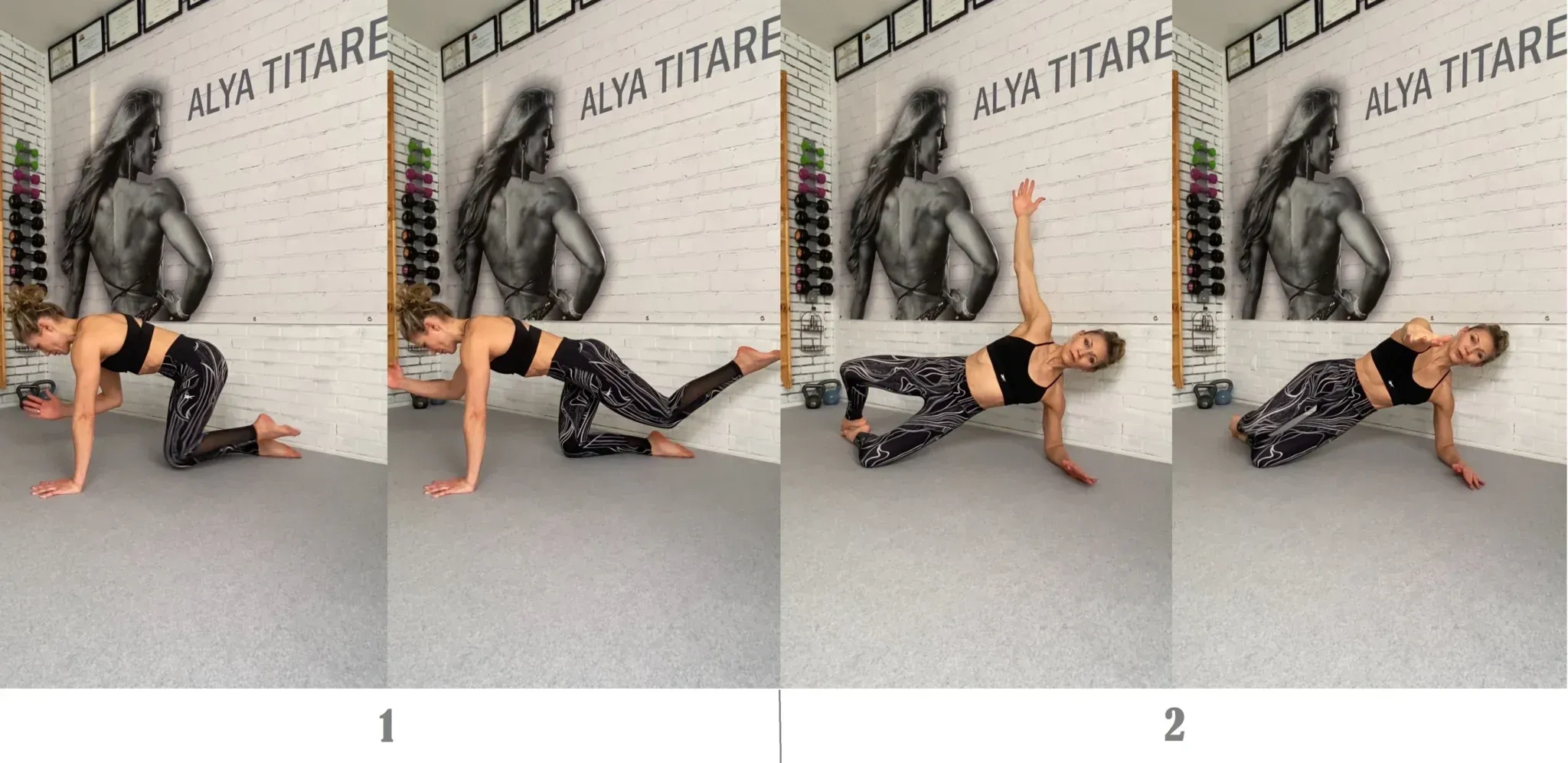
Strength Exercises for the Muscle Corset
Exercise 1
Hip hinge using a stick. Stand upright. On the inhale, move your hips back while keeping your torso balanced as it leans forward — do not round your back. Make sure the stick touches your occiput (back of the head), thoracic spine, and sacrum.
Exercise 2
Stand upright. Raise your arms overhead holding a stick and bend to the right and left. Breathe into your ribs and back; on the exhale, draw in the front abdominal wall.

Exercise 3
Stand upright on one leg. Simultaneously move your hips and leg back while extending your opposite arm forward. The pelvis should remain level, the knee should not collapse inward, and it should follow the same line as the foot. Maintain your balance. Repeat on the other leg.
Exercise 4
Stand upright with a loop resistance band placed above your knees. Squat down while keeping your back straight and your feet parallel. Stretch the band by pushing your knees outward. Inhale into the ribs and back; on the exhale, return to the starting position, drawing in the front abdominal wall.
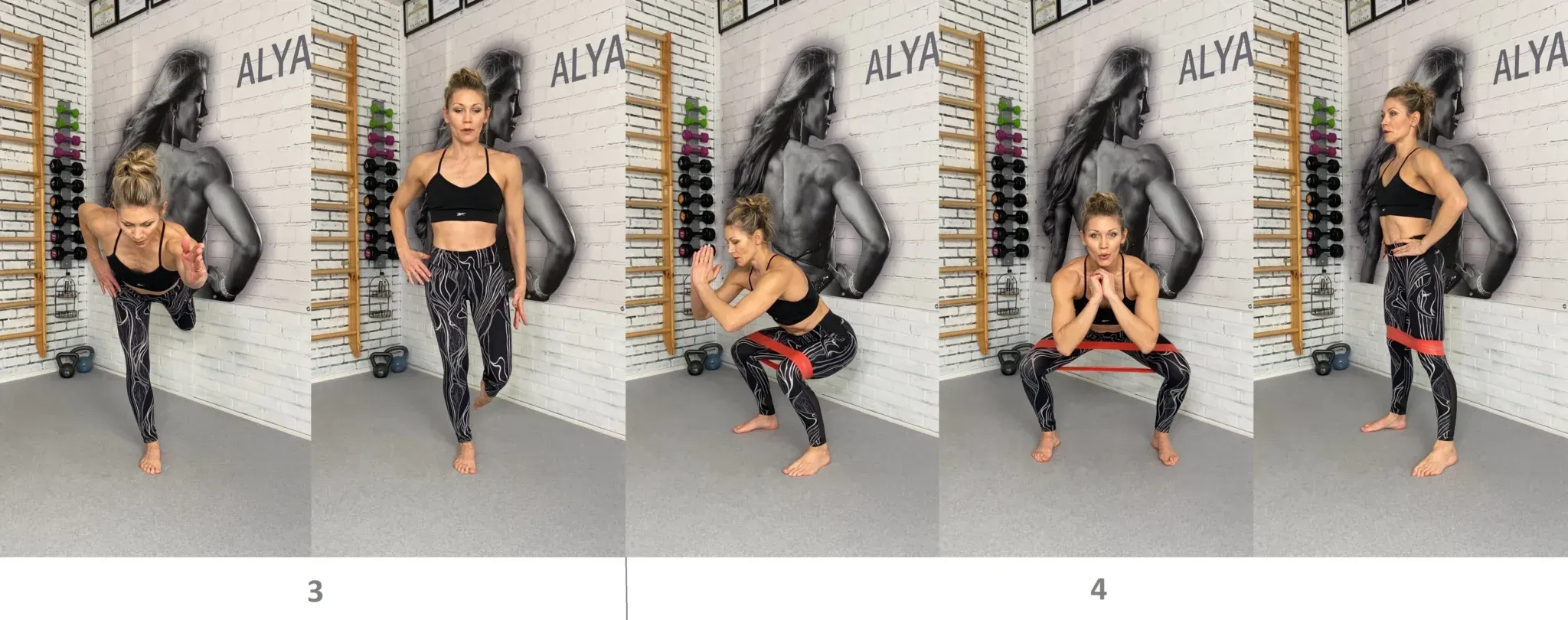
If your muscle corset is weak, it's essential to perform mobility and flexibility exercises for the spine and hip joints — for example, “Cat-Cow” — and also include strengthening exercises to develop core muscular endurance. Basic elements should be practiced until they become automatic, and only after that should the workout be made more challenging.
Never forget about warming up and cooling down. Be prepared for the fact that the adaptation process won’t always go smoothly. Don’t stop — keep working on yourself.
All the useful information and experience accumulated over the years won’t fit into this material. I invite you to check out my video recommendations: “How to Strengthen the Spinal Muscle Corset at Home.”
For women over 35, it’s a must-have!
Today, you learned a bit about how to strengthen your core muscles. It’s worth starting your training today — don’t put it off until tomorrow.
Wishing you a strong and healthy back!
— Your fitness trainer, Alevtina Titarenko 😉